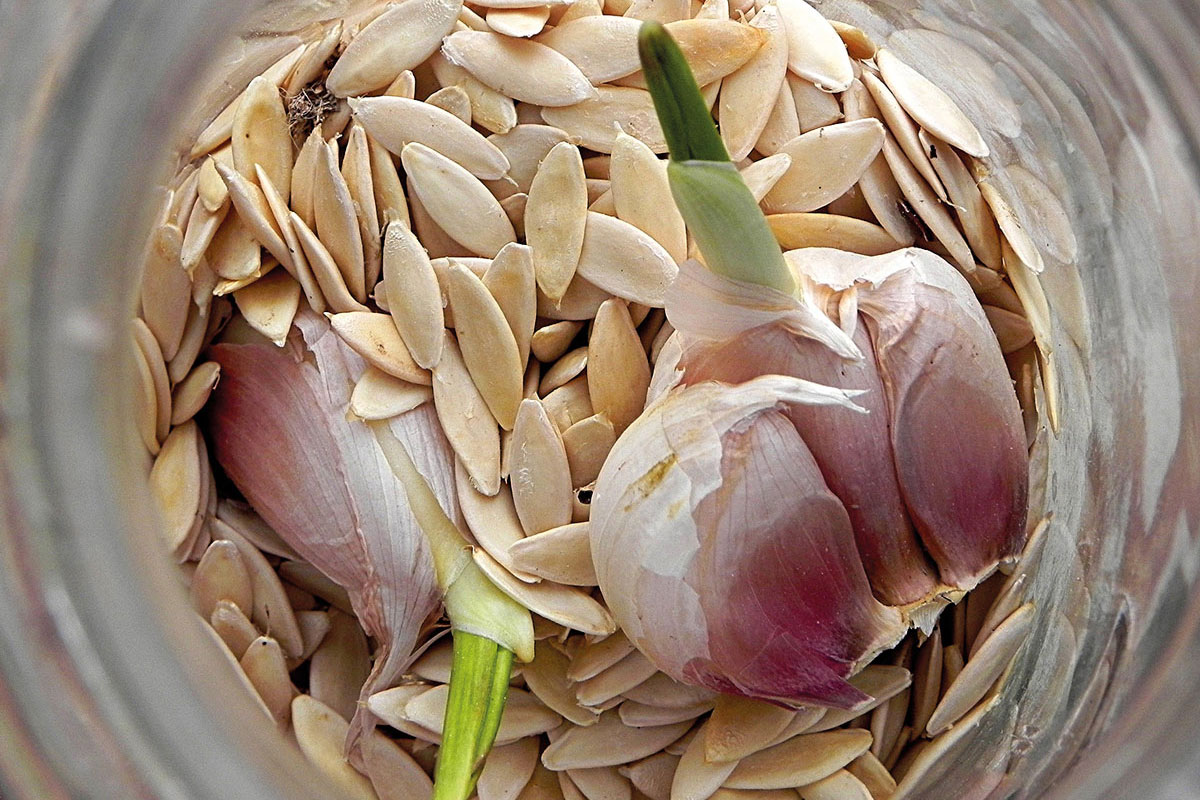
Winter is the right time to check the seeds we will sow when spring comes. We need to look over the containers where we keep them to learn about their state. We need to check that they are well preserved, that they have not gone mouldy due to an excess of humidity, that they do not have woodworms, moths or any other problem such as mice. In short, we need to see if they are ready to be sown. It is very convenient to preserve them in a favourable and stable environment, in a safe container (for instance, a glass jar with a lid). Above all, it is essential that they are dry before we store them. Some farmers add some complementary ingredient to ensure their preservation: for instance, chalk as a drying agent, or some garlic as a disinfectant for the jar atmosphere.
It is reasonable to keep the seeds of our best plants. From the results of the latest harvests, we can tell how they behave in the soil and the quality of their fruits. Therefore, we can expect the same or even better results. Having their own seeds, at least a few varieties, should be the aspiration of every person interested in making their garden more sustainable. Preserving their own seeds from harvest to harvest has always been a particularly important task for horticulturists and farmers in general. Nowadays, some horticulturists still keep them.
When we keep and sow seeds of those plants we are more satisfied with, we are improving cultivation while pushing for our interests, as our ancestors used to do. There is not an easier way of doing it. This way, good crops adapt to the local soil and climate conditions, and to our requirements in terms of size, colour and taste; that is, we also adapt them to our expectations in the kitchen. Thanks to our grandparents, their ancestors and the selection they did every year with plants and animals, we have inherited a great deal of traditional agricultural varieties that we can enjoy, even though some have been lost due to lack of use. If we do not pick the seeds from the best plants, this historical process of selection and generational continuity will stop. Then, little by little, each variety gets forgotten and eventually disappears.
Putting seeds away is very important, but so is exchanging them, because one garden is not enough to keep a variety up. It is necessary to exchange plants and seeds, and for this, loans between neighbours and acquaintances are very appropriate. It is also good to comment on the qualities and the defects of the seeds with fellow farmers and vegetable gardeners. This way, all the cultivators participate in the design of each plant and each harvest according to their use. Once again, this is what agrarian societies have been doing for the past 10,000 years of collaborative domestication. That is, the different varieties found in traditional species are the result of collective work. No one, except groups of users and seed keepers (in a broad sense of the word), should claim their ownership. For this reason, we need systems of exchange for both seeds and agricultural knowledge, to keep seeds alive through cultivation, and also safe in the hands of farmers.
If we do not have the seeds that we need, we should ask our friends and partners – do not forget about older farmers – or go to one of the seeds exchanges that have been taking place for a few years now all over the region. In these meetings, there are all sorts of farmers: beginners and veterans, young and old. They talk about their crops, about results, good and bad, about problems and their possible solutions. These seed parties are the best place to find what we are looking for, besides any other unexpected seed that encourages us to try new crops.





